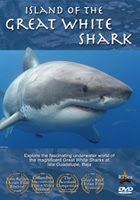 Marine Protected Areas (MPAs) are often viewed by commercial and sport fishing interests as a total invasion of the rights of fishermen to harvest bounty from the sea where ever and when ever they can find it. Thought of as a bureaucratic intrusion, compliments of fish-hugging environmentalists, MPAs have actually proven not only to repair and improve the health of the marine ecosystems within their boundaries, but have also shown spillover effects that actually can prove beneficial to sustainable fisheries.
Marine Protected Areas (MPAs) are often viewed by commercial and sport fishing interests as a total invasion of the rights of fishermen to harvest bounty from the sea where ever and when ever they can find it. Thought of as a bureaucratic intrusion, compliments of fish-hugging environmentalists, MPAs have actually proven not only to repair and improve the health of the marine ecosystems within their boundaries, but have also shown spillover effects that actually can prove beneficial to sustainable fisheries.Scientists have known for some time that as fish stocks improve within a marine protected area, the population also begins to improve within the surrounding area. Larger fish establish larger territories, often well outside the boundaries of the MPA (after all, they're not interested in arbitrary borders set by us humans).
Now researchers from Oregon State University have concrete evidence that fish larvae, emanating from within an MPA, can travel distances of over 100 miles and thereby increase stocks of fish well outside of the protected area.
 The researchers worked with the MPAs that were established in the late 90's around the big island of Hawaii. Their study focused on the yellow tang, a popular reef fish in the aquarium trade and one whose numbers were declining - not good for commercial interests and certainly not good for the yellow tang. Since the inception of the Hawaiian MPAs, the population of yellow tangs has improved. But there was also seen an increase in numbers many miles outside of the protected areas. Could this be due to a spillover effect from more yellow tangs venturing outside of the protected zone? That would appear to be the case except for one fly in the ointment: yellow tangs are sedentary and settle into an area on the reef not much greater than a half mile in diameter.
The researchers worked with the MPAs that were established in the late 90's around the big island of Hawaii. Their study focused on the yellow tang, a popular reef fish in the aquarium trade and one whose numbers were declining - not good for commercial interests and certainly not good for the yellow tang. Since the inception of the Hawaiian MPAs, the population of yellow tangs has improved. But there was also seen an increase in numbers many miles outside of the protected areas. Could this be due to a spillover effect from more yellow tangs venturing outside of the protected zone? That would appear to be the case except for one fly in the ointment: yellow tangs are sedentary and settle into an area on the reef not much greater than a half mile in diameter.To solve the puzzle, the researchers used the same techniques used by police detectives and paternity suit lawyers - DNA. By taking tissue samples from various groups of yellow tangs both within the MPA and beyond, they were able to establish direct relationships with yellow tangs that were as much as 114 miles apart. Only the transportation of larvae, aided by ocean currents, could explain the familial connection.
"This is similar to the type of forensic technology you might see on television, but more advanced," said researcher and lead author of the study, Mark Christie. "We're optimistic it will help us learn a great deal more about fish movements, fishery stocks, and the genetic effects of fishing, including work with steelhead, salmon, rockfish and other species here in the Pacific Northwest."
Oregon State University marine biology professor, Mark Hixon, added, "Tracking the movement of fish larvae in the open ocean isn't the easiest thing in the world to do. It's not like putting a radio collar on a deer. This approach will provide valuable information to help optimize the placement of reserves, identify the boundaries of fishery stocks, and other applications."
One area of concern that grew out of the study was the importance of having good breeding stock by which to provide sufficient and healthy larvae yields. Larger fish are often the target of commercial fishing but these fish have a much greater capacity to produce larvae than smaller ones. Previous studies at the university had shown, as an example, that a single two-foot vermillion rockfish produces more eggs than 17 females that are 14 inches long.
While we continue to establish Marine Protected Areas across the world - some small, some covering many tens of thousands of square miles - the total coverage is but a mere sliver, approximately 1 percent of the world's oceans. And yet, as minuscule as they currently are in size, they have a tremendous impact on the overall health of countless marine species.
Read the Oregon State University news release on EurekAlert!.







No comments:
Post a Comment